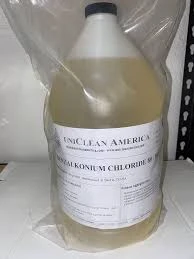Understanding the Role of Coagulants and Flocculants in Water Treatment Processes
Understanding Coagulants and Flocculants in Water Treatment Processes
Water treatment is a critical process that ensures the provision of clean and safe drinking water while also managing wastewater effectively. Among the various methods utilized in water treatment, the use of coagulants and flocculants stands out as vital components that enhance the efficiency of the purification process. In this article, we will delve into the roles of these substances, their mechanisms of action, and their importance in maintaining water quality.
What Are Coagulants and Flocculants?
Coagulants are chemical substances added to water to facilitate the aggregation of particles. They work by neutralizing the electric charges on suspended particles, allowing them to come together to form larger particles, known as flocs. Common coagulants include aluminum sulfate (alum), ferric chloride, and polyaluminum chloride. These substances are effective in treating water that contains turbid materials, colloidal particles, and other impurities.
On the other hand, flocculants are agents that further assist in the aggregation process once coagulants have been added. They typically have a higher molecular weight and are capable of bridging multiple particles together, forming larger, more settled flocs that can easily be removed by sedimentation or filtration. Common flocculants include polyacrylamides and natural substances such as modified starches and chitosan.
Mechanism of Action
The process of coagulation and flocculation typically occurs in several stages. Initially, when coagulants are introduced into the water, they dissolve and create positively charged ions that neutralize the negatively charged particles in suspension. This neutralization reduces the repulsive forces between particles, allowing them to collide and stick together.
Once the particles have been successfully coalesced through coagulation, flocculants are added. These flocculants utilize their larger size and structure to connect and bind the newly formed flocs. This aggregation process leads to the formation of larger clusters that settle more quickly, making it easier to remove them from the water.
Importance in Water Treatment
The application of coagulants and flocculants is crucial for several reasons
coagulants and flocculants

1. Improved Water Clarity The primary purpose of coagulation and flocculation is to remove turbidity, ensuring that water is clear and visually appealing. Clear water is often perceived as cleaner and is essential for aesthetic purposes.
2. Removal of Contaminants Coagulants and flocculants are effective at trapping various forms of contaminants, including sediments, organic materials, microorganisms, and heavy metals. This removal process is essential for protecting public health and the environment.
3. Cost-Effectiveness By enhancing the efficiency of sedimentation and filtration processes, coagulants and flocculants can significantly reduce operational costs associated with water treatment. They help lower energy consumption and chemical usage in subsequent treatment stages.
4. Adaptability The variety of coagulants and flocculants available allows water treatment facilities to tailor their approach based on the specific characteristics of the water being treated. This adaptability is crucial for addressing the unique challenges posed by different water sources.
Environmental Considerations
While coagulants and flocculants play an essential role in water treatment, environmental considerations must also be taken into account. The residual chemicals left in treated water can raise concerns regarding human health and ecosystem balance. Therefore, selecting appropriate coagulants and flocculants, monitoring their concentrations, and ensuring that they comply with safety regulations are critical steps in the treatment process.
Moreover, advances in technology and an increasing emphasis on sustainability have led to the development of eco-friendly coagulants and flocculants that minimize environmental impacts. These alternatives aim to provide similar or superior performance while reducing toxicity and promoting biodegradability.
Conclusion
Coagulants and flocculants are indispensable tools in the realm of water treatment, contributing to cleaner and safer water supplies. Their unique mechanisms of action facilitate the removal of impurities and enhance overall treatment efficiency. As the demand for high-quality water treatment continues to grow, ongoing research and innovation in the field of coagulants and flocculants will be essential. By striving for continuous improvement and sustainability, we can ensure that our water resources remain safe for current and future generations.
-
Pbtc Scale InhibitorPBTC: A Scale Protector for Industrial Water TreatmentNewsAug.05,2025
-
Organic Phosphonate: An Efficient Defender in the Field of Scale InhibitionNewsAug.05,2025
-
Hydrolyzed Polymaleic Anhydride: Green Pioneer in Scale Inhibition FieldNewsAug.05,2025
-
PAPEMP Polyamino Polyether Methylene Phosphonic Acid For SaleNewsAug.05,2025
-
Flocculant Water Treatment: A Pioneer in Purification in the Field of Water TreatmentNewsAug.05,2025
-
Benzyl Isothiazolinone: An Efficient and Broad-Spectrum Antibacterial Protective GuardNewsAug.05,2025





